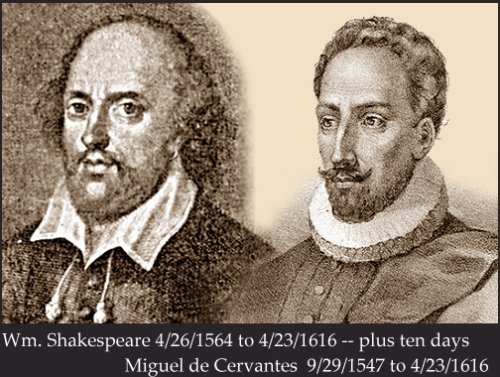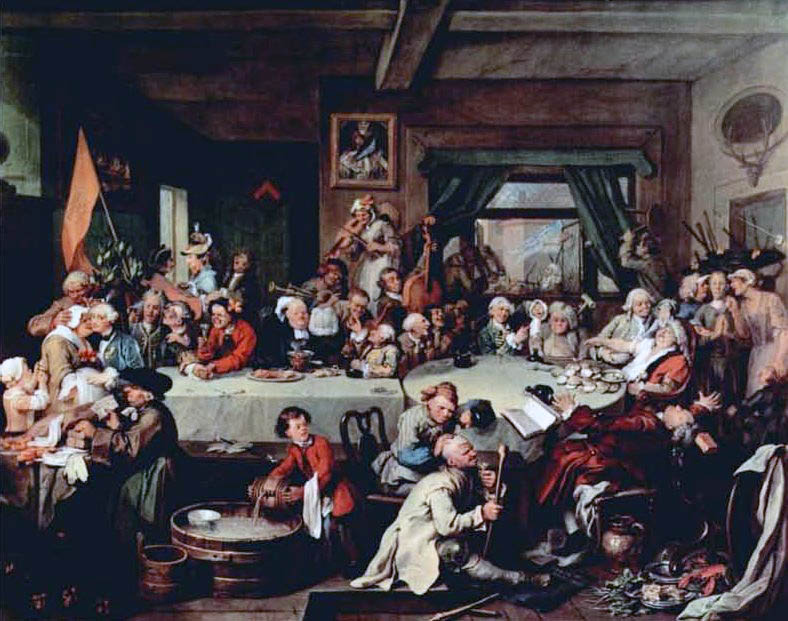Time Out of Joint
Today, UH scholar, Richard Armstrong tells us about puzzles in chronology. The Honors College at the University of Houston presents this series about the machines that make our civilization run, and the people whose ingenuity created them.
Here's a puzzle. William Shakespeare and Miguel de Cervantes both died on the 23rd of April in 1616. Now, they were both equally and completely dead on April 23; and yet, they did not die on the same day. How is this possible?
Welcome to the disturbing world of historical chronology. We like to think of historical dates as part of a tidy grid. We can use this grid to organize great events of the past in our minds. Imagine a huge pegboard -- one peg for every day in history. The peg April 23, 1616 now has two tags: Death of Shakespeare, Death of Cervantes. Isn't that convenient?
Alas, it's not so simple. Cervantes died in Spain, which had adopted the Gregorian calendar three decades before. The Gregorian calendar was a reformed version of Julius Caesar's calendar, which first put Europe in sync with the solar year. But the Julian calendar year was slightly too long. Over the centuries since Caesar, the calendar year was gradually slipping behind the natural seasons. Pope Gregory XIII called for this to be corrected, since it led to observing Easter on the wrong day. A new rule was devised for leap years, and ten days were cut to put the calendar back in line with the solar year. So when Spain adopted the reform, October 5 was immediately followed by 15th.

But Shakespeare died in England, a Protestant country where people would hardly let the Pope steal ten days of their lives. So the bard actually died ten days after Cervantes. Now we have to imagine two separate pegboards for historical events, one for each country. April 23 on the English pegboard was May 3 on the Spanish one.
And they had to keep using separate pegboards in Europe for some time to come, because Protestants kept resisting the Vatican's new calendar. Eventually, they had to give in to this reasonable adjustment. Britain and its Empire finally adopted the Gregorian reform in 1752. But by then the British had to cut a full 11 days from the calendar. Eastern Orthodox countries were even more resistant. The Bolsheviks brought it to Russia at the end of WW I. Greece didn't adopt it until 1923!
This is troubling, because we want dates to function like longitude and latitude. But there's no going back into the past -- no using the calendar like MapQuest or Google Earth. We commonly use historical dates as labels and schemes for commemoration. They're invitations to think about the past as we move through our present calendar year.
So UNESCO, inspired by the apparent coincidence in death dates, declared April 23 The International Day of the Book. Shakespeare now joins Cervantes for this festival, and we wink at the ten-day difference. But what a striking idea: the authors of Hamlet and Don Quixote dying on the same day. Why, it might even inspire us all to make a date with a book!
I'm Richard Armstrong at the University of Houston, where we're interested in the way inventive minds work.
It is even possible that Cervantes actually died on April 22, and was buried on April 23. Traditionally, dates put on tombstones in Spain noted the day of burial, not the day of death. April 23 is called both the International Day of the Book and World Book and Copyright Day.
The difference in calendars nearly led American athletes to miss the first Olympics in 1896. See Episode 1137.
David Ewing Duncan. Calendar: Humanity's Epic Struggle to Determine a True and Accurate Year. (New York: Avon Books, 1998). [This best-selling book is a broad survey and an entertaining read. Chapters 13 and 14 deal specifically with the Gregorian reform.]
The text of Pope Gregory XIII's bull Inter gravissimas (Feb. 24, 1581/82), setting forth the the reform and calling for its universal adoption. Note the provision(section 8) enjoining judges in any potential litigation arising from cutting the calendar to defer the deadlines for any payments by ten days. Also note in section 12 that the Pope refers explicitly to calendar reform as prerogative of his office of Pontifex Maximus. This is the title of Chief Priest of Rome dating back to pagan times, and was the office Julius Caesar occupied when he instituted his calendar reform in 46-45 BC.

The oil painting above is one of Hogarth's representations of goings-on during a British election. It was done in 1755, three years after the British calendar revision. What we find particularly interesting is the small blackboard at the feet of the character sitting on the floor in the foreground.

Although it is hard to make out without seeing the original, the words on the board say, “Give us our eleven days";